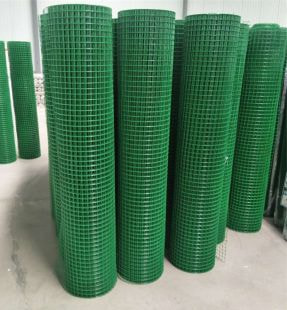How is Welded Mesh Measured and What are the Dimensions of Welded Mesh?
Welded mesh is measured by its wire thickness (gauge) and mesh size (opening dimensions). Understanding these measurements is crucial for various applications.
Welded mesh, also known as welded wire mesh or welded wire fabric, is a versatile material commonly used in construction, fencing, agriculture, and industrial applications. It consists of wires welded together at their intersections to form a grid pattern. To determine the dimensions of welded mesh, two primary measurements are considered: wire gauge and mesh size.
Wire Gauge:
The wire gauge refers to the thickness of the wire used to create the mesh. It is typically expressed in gauges, with a lower gauge number indicating thicker wire. Common wire gauges for welded mesh range from 6 to 18, with 6 being the thickest and 18 being the thinnest. Thicker wires offer greater strength and durability, making them suitable for heavy-duty applications such as concrete reinforcement or security fencing. Thinner wires, on the other hand, are more flexible and lightweight, ideal for applications where weight is a concern, such as poultry cages or mesh partitions.
Mesh Size:
The mesh size, also known as the opening size or aperture size, refers to the dimensions of the openings between the wires in the mesh. It is typically measured in inches or millimeters and represents the distance between adjacent wires. Mesh sizes can vary widely depending on the intended application, with smaller mesh sizes providing greater security and larger mesh sizes offering better visibility and airflow.
Real-Life Applications:
Understanding the measurements of welded mesh is essential for selecting the right type of mesh for various applications:
Construction: In construction, welded mesh is commonly used for concrete reinforcement to enhance the structural integrity of buildings, bridges, roads, and other structures. The wire gauge and mesh size are chosen based on the specific requirements of the project, such as load-bearing capacity and concrete thickness.
Fencing: Welded mesh is widely used for fencing applications, including perimeter fencing, security fencing, and animal enclosures. The choice of wire gauge and mesh size depends on factors such as the level of security required, the size of the animals being contained, and aesthetic preferences.
Agriculture: In agriculture, welded mesh is used for various purposes, including livestock fencing, poultry cages, and crop protection. The wire gauge and mesh size are selected based on factors such as the type of livestock, the size of the animals, and the level of protection needed against predators.
Industrial: In industrial settings, welded mesh is used for partitions, safety barriers, machine guards, and storage enclosures. The wire gauge and mesh size are chosen based on factors such as the level of security required, the size of the equipment being protected, and regulatory requirements.
In conclusion, understanding how welded mesh is measured and the dimensions of welded mesh is essential for selecting the right type of mesh for various applications. By considering factors such as wire gauge and mesh size, individuals and businesses can ensure that they choose welded mesh that meets their specific needs for strength, durability, security, and functionality.
- Previous: Benefits and Applications of Epoxy Coated Wire Mesh
- Next: None


